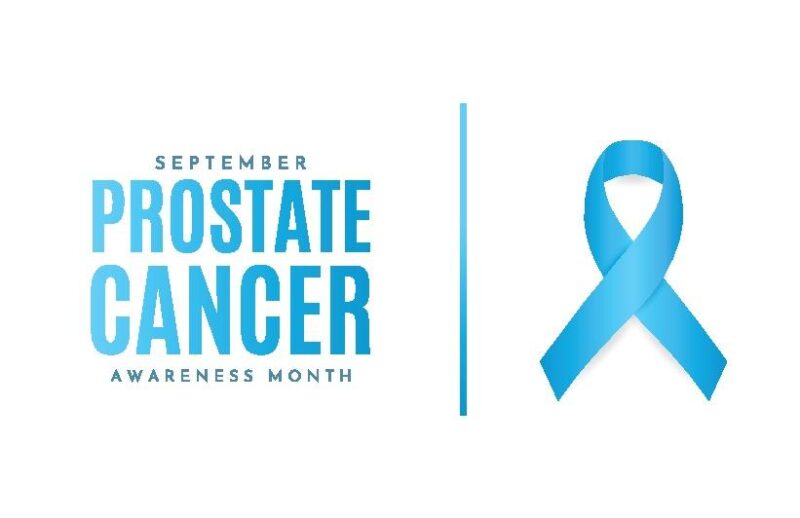September is Prostate Cancer Awareness month, and the American Cancer Society just came out with a report that showed increases in prostate cancer rates each year over the past decade. (Image: Getty)
getty
The state of prostate cancer in the U.S. is not exactly great. Just take a look at the “Prostate cancer statistics, 2025” report from the American Cancer Society, published at the beginning of September, which not coincidentally happens to be Prostate Cancer Awareness Month. The report showed that from 2014 to 2024, the rates of prostate cancer increased by around 3% each year, making what was already the second most common cancer among men even commoner.
Oh, and if you really want to put a finger on the prostate cancer situation in the U.S., see what the ACS reported about prostate cancer that’s already spread to distant organs. The rates of such advanced stage prostate cancer have gone up in all age groups over the past decade: a 2.6% annual increase among men younger than 55 years, a 6.0% annual increase among men from 55 to 69 years of age and a 6.2% annual increase among men 70 years and older in age. All of these up and ups makes you wonder what’s up—to quote that 4 Non Blonde’s song— with the health and surroundings of men, especially after prostate cancer rates went down from 2007 to 2014 by 6.4% per year.
If You Are Male In The U.S., You Now Have A One In Eight Chance Of Developing Prostate Cancer
Again, all of the aforementioned numbers are specific for the U.S. of A. I already served up some global prostate cancer numbers two weeks ago, when I covered in Forbes Björn Borg’s prostate cancer diagnosis. As I stated then, worldwide, prostate cancer is the second most common cancer— right behind lung cancer— and the fifth leading cancer cause of death—following lung, liver, colorectal and stomach cancer. It’s already the most common cancer among men in 112 different countries.
But back to the U.S. In this country, prostate cancer falls behind only skin cancer as the most common cancer diagnosis among the sex more likely to leave the toilet seat up— meaning men. In 2025, prostate cancer will end up comprising 30% of all male cancers. The ACS report estimated that at current rates, this year should see, oh, around 313,780 new cases of prostate cancer. That’s quite a lot of cases. If you male it in America, so to speak, you’ve got about a one in eight chance (12.8%) of developing prostate cancer sometime in your lifetime.
While Rates Of All Stages Of Prostate Cancer Have Increased, Later Stage Rates Have Increased Even More
Now, prostate cancer is a bit like musicals in the sense that the staging really matters. The more advanced stage the cancer is, the tougher it can be to treat and control, and the worse the prognosis on average. The ACS report indicated that from 2017 through 2021 there was a 2.4% annual increase is the rates of localized-stage prostate cancer. This is cancer that’s still confined to the prostate and comprises both Stage 1 and 2 prostate cancer. Rates of such localized stage prostate cancers did decrease among men 40 years and younger and remain stable among those 40–69 years. But they did increase among men 70 years and older.
The ACS reported an greater jump in the rates of regional-stage prostate cancer during that 2017 to 2021 time period: 4.6% per year. Regional-stage means Stage 3: cancer that has spread beyond the prostate to nearby structures such as your seminal vesicles or lymph nodes. While the rates of regional-stage prostate cancer did go down among men less than 40 years of age and remain stable among those 40 to 54 years of age, they did go up by 3.4% per year among men from 55 to 69 years of age and 7.5% per year among those 70 years and older.
Even bigger increases happened for distant-stage or Stage 4 prostate cancer: 4.8% annually from 2017 through 2021. Distant-stage means the prostate cancer has spread to parts of the body distant from the prostate. This means any body part that’s not next to the prostate when you aren’t in the down dog yoga position. The most common sites of such distant spread are the bones, liver and lungs. Increases in rates of such disease occurred among men of all age groups, ranging from 2.6% to 2.9% annually among those 20 to 54 years of age up to 5% annually aong those 55 years and older.
Prostate Cancer Death Rates Have Been Going Down, But The Declines Have Slowed
When it comes to death rates from prostate cancer, the ACS report had a good news, but less good news situation. Mortality from prostate cancer did go down by 0.6% per year from 2012 to 2023. This was however a lot lower that the 3.5% annual decline seen from 1993 to 2012.
So, the big question is what’s changed or slowed down over the past decade? Has there been less innovation in prostate cancer treatments compared to previous decades? Well, since 2000, federal funding for scientific research in general has barely kept up with inflation, even though conducting such research has gotten more and more complex. Has screening for prostate cancer gone down? Well, there certainly have been continuing changes in the U.S. healthcare system since the 1990s, especially with primary care. These days you’ve got to wonder how many men have primary care doctors whom they see regularly and who know them and their risk factors well. Are men routinely getting prostate exams, you know that whole-finger-up-the-butt thing, as part of their annual physicals? With primary care seemingly going more and more assembly line-like, you’ve gotta wonder how thorough such exams are these days. There’s also been some debate over how often to check men’s blood for prostate specific antigen or PSA levels.
What Is Causing These Increase In Prostate Cancer Rates
There also should be more awareness—not just during Prostate Cancer Awareness Month, but all the time—about what may be driving the increases in prostate cancer rates over the past decade. Could it be more carcinogenic chemicals in everything that we are breathing, drinking, eating and otherwise being exposed to on a regular basis? Studies have suggested that, for example, chemicals such as ones found in pesticides may be associated with prostate cancer. Could the culprit be changes in lifestyle such as less healthy diets and less exercise? Could the continuing rises in overweight and obesity rates be playing roles? Could it be some combination of all of the above?









